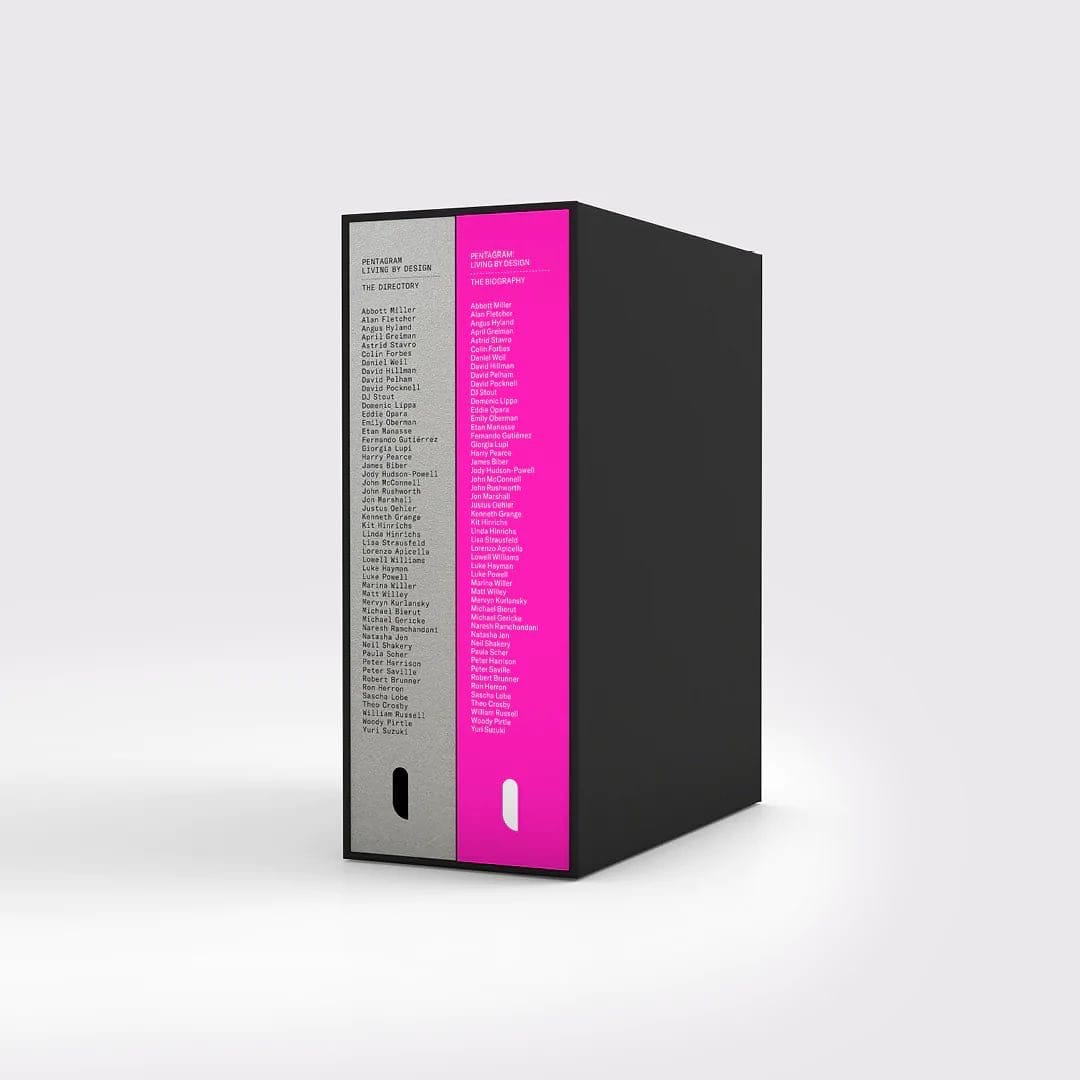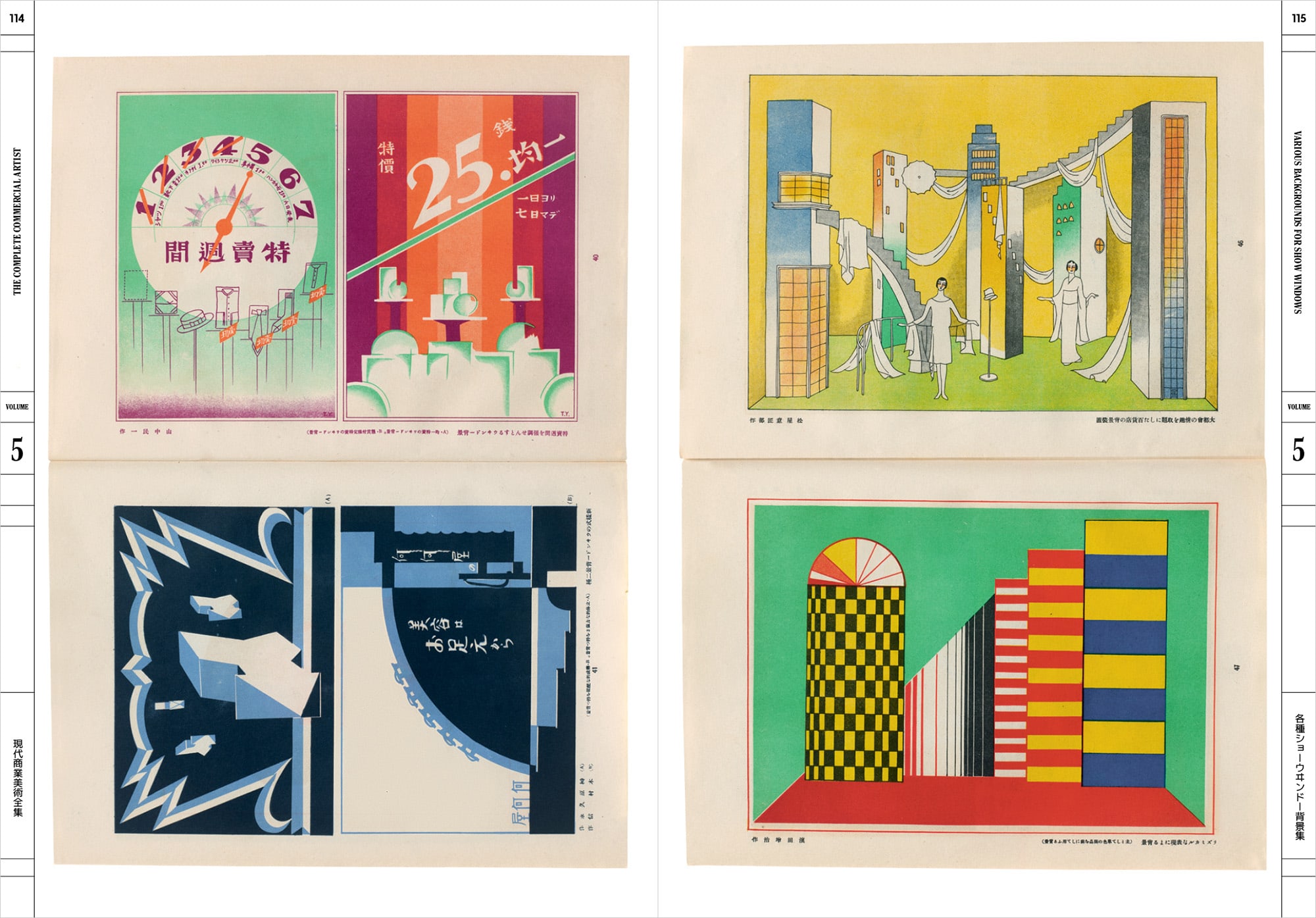Last year, Unit Editions, the independent publishing company founded by Adrian Shaughnessy and Tony Brook, released a massive two-book box set on design studio Pentagram in conjunction with the firm’s 50th anniversary. That limited edition set of 1000 sold out immediately. Now, almost a year later, the book(s) are getting a wide release thanks to Thames & Hudson. In two densely illustrated and deeply research books, Pentagram: Living by Design tells the story of how five partners with a unique business structure turned into a global, independent design studio with more than 50 partners in its history. The book itself is great but I was also interested in the meta story here: how does a book like this happen? How do you get 20+ partners on-board and to agree on the narrative? How do you begin to think about telling a story that is both the story of one firm and of 50 different, semi-autonomous partners? In this conversation with Adrian Shaughnessy, the book’s author, we hear the inside story from conception to completion as well what lessons we can learn from Pentagram’s history.
Last year, your publishing company Unit Editions released Pentagram: Living By Design, a massive, two-volume boxset on the history of Pentagram, which is now being released through Thames & Hudson. How’d this project come about and when did you get involved?
Discussions about a book began in 2017, when Pentagram were thinking about ways to celebrate their 50th anniversary in 2022. Over the next couple of years, we had many intense discussions about every aspect of the publication. At one point it was planned as five individual books of varying sizes, dealing with five different aspects of the group. And there were endless conversations about content, design style, editorial tone, the role of former partners, even the title was a topic of endless scrutiny.
Tony, as the book’s designer, and me as the writer, travelled to all four Pentagram offices and interviewed every partner, and some ex-partners. More than one of the current group told us that they didn’t think a book was the best way to celebrate 50 years. One partner advocated making a film, another said they’d prefer a blow-out party. But the idea of a book prevailed. Hardly surprising, since publishing is deeply embedded in the group’s ethos – how many design groups outside of architecture can boast as many studio monographs as Pentagram (six at last count), not to mention a hatful of partners’ solo books and the multi-volume Pentagram Papers series?
Forming a coherent editorial and design policy was a long and occasionally fractious journey. This is only to be expected when dealing with 20+ vociferous, opinionated, and sharp brained individuals, all with an equal voice, and every one of them a designer, including editorial specialists. And then there was a large contingent of ex-partners, some of them holding a seigneurial presence within the group. We started the project with two fundamental principles. First, that Pentagram’s partner-owned organisational model was what made them radically different from all their similarly sized competitors, and which allowed the firm to endlessly regenerate over 50 years. Second, the idea that you could go back to Pentagram’s best work from 1972, and you could look at the best work from 2022, and you’d find that the design-led philosophy was still present. Armed with those two affirmations, everything else was a matter of debate.
Pentagram, to me, has always been hard to describe. It’s a single design studio — a brand name, if you will — but it’s also 24 (as of today) individual studios. What were the challenges in telling both a singular story and 20+ (current and former partner) individual stories? Where does the partner name end and the Pentagram brand begin?
There are two Pentagrams: micro-Pentagram and macro-Pentagram. Micro-Pentagram consists of the 24 partner-led teams – each enjoying a high level of autonomy. Macro-Pentagram is the entity that comprises the 24 partner-led teams, spread over four locations in two continents, and which is responsible for replenishing the gene pool of partners to ensure longevity and to maintain what Michael Bierut has called the group’s “quasi-communistic regime”. For me, these are the factors that define Pentagram.
This story is exclusive to Patreon subscribers.
Sign up for as low as $3 / month!
Already a supporter? Click here to read the entire story.




